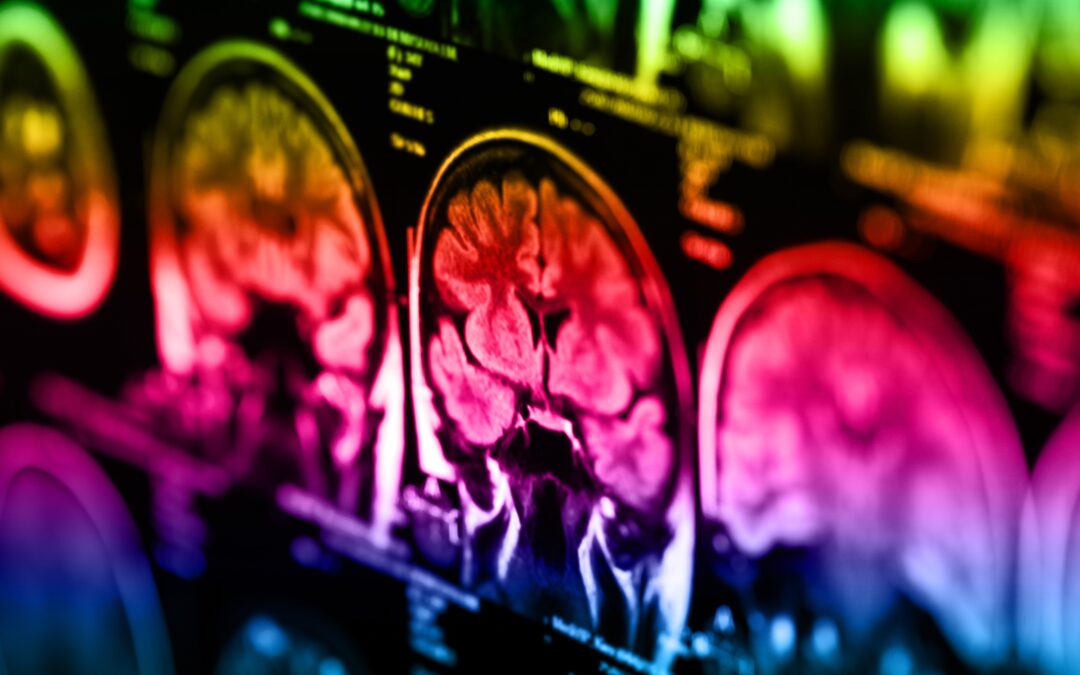The latter half of the 20th century marked a significant era in cognitive science research, particularly in the domain of memory processes. Neuropsychological studies of brain-damaged patients provided crucial evidence supporting the dichotomous nature of human memory functionality and anatomy. These investigations led to the development of novel cognitive tasks designed to examine the processes of learning and information retention, ultimately revealing the multifaceted complexity of the memory system.
In 1974, Alan Baddeley and Graham Hitch proposed a multicomponent model of working memory (WM), which evolved from the previously accepted unitary system of short-term memory. Initially, this model comprised three components: the central executive, phonological loop, and visuospatial sketchpad. Subsequently, Baddeley (2000) introduced a fourth component, the episodic buffer, to account for the multi-functionality of information processes and the limited capacities of the visuospatial sketchpad and phonological subsystems.
The acceptance and implementation of Baddeley’s WM model in cognitive science research led to extensive investigations into working memory as a storage system for visual, spatial, and auditory information, as well as a manipulation system for various cognitive processes, including attention, reasoning, problem-solving, language, and learning. Neuroimaging techniques, such as positron emission tomography (PET) and functional magnetic resonance imaging (fMRI), have significantly contributed to elucidating the neural circuits active during visual and spatial tasks, as well as the neural pathways involved in WM information processing and its interaction with long-term memory.
Key Neuroimaging Studies
One of the first notable studies employing PET to support Baddeley’s multicomponent model of working memory was conducted by Paulesu, Frith, and Frackowiak in London (1993). The researchers measured regional cerebral blood flow (rCBF) in healthy participants during cognitive tasks that engaged the subvocal system and phonological store. The results demonstrated that Broca’s area is associated with the subvocal system, while the left supramarginal gyrus is linked to the phonological store.
Another influential study supporting Baddeley’s model was conducted by Smith and Jonides (1997) at the University of Michigan. Their findings provided strong evidence that verbal, spatial, and object information utilize distinct working memory systems localized in separate brain regions. The right hemisphere was found to correlate with spatial memory, while the left hemisphere was associated with verbal memory.
Neurodevelopmental Perspectives
Neuroimaging studies have also contributed to our understanding of neurodevelopmental changes in working memory and cognitive control functions across the lifespan. For instance, Kwon et al. (2002) employed a 2-back visuospatial working memory (VSWM) task using fMRI, revealing increased activation in various brain regions, including the lateral prefrontal cortex (LPFC), posterior parietal cortex (PPC), dorsolateral prefrontal cortex (DLPFC), and ventrolateral prefrontal cortex (VLPFC).
Other studies have explored the developmental trajectory of working memory circuits. Gogtay et al. (2004) demonstrated regional patterns of grey matter loss in the brain, with early reduction in the orbitofrontal cortex (OFC) and ventrolateral PFC, followed by the dorsolateral PFC. These findings have implications for understanding the maturation of cognitive control processes across different age groups.
Conclusion
The application of neuroimaging techniques such as PET and fMRI has proven invaluable in elucidating the neural substrates of working memory processes. These methods have provided strong support for Baddeley’s multicomponent model of working memory and have significantly advanced our understanding of the cognitive anatomy of the brain. As research continues, it is clear that the interplay between neurodevelopmental changes, individual differences, and cognitive functions will remain a crucial area of investigation in the field of working memory.
References
Baddeley, A. D. and Hitch, G. J. (1974). Working Memory. In The Psychology of Learning and Motivation: Advances and Research and Theory, ed. GA Bower, p. 47-89. New York: Academic.
Baddeley, A. D. (1992). Working Memory. Science, 255, 556 – 558.
Baddeley, A. D. (2000). The episodic buffer: a new component of working memory? Trends in Cognitive Science, 4, 417 – 23.
Baddeley, A. D. (2012). Working Memory: Theories, Models, and Controversies. The Annual Review of Psychology, 63, 1-29.
Baddeley, A. D., Eysenck, M. W., and Anderson, M. C. (2015). Memory. 2nd ed. Psychology Press.
Barbey, A. K., Koenings, M., and Grafman, J. (2013). Dorsolateral Prefrontal Contribution to Human Memory. National Institute of Health, 49(5), 1195 – 1205.
Booth, J. R., Burnam, D.D., and Meyer, J. R. et al. (2003). Neural development of selective attention and response inhibition. NeuroImage, 20(2), 737 – 51.
Bunge, S. A., and Crone, E. A. (2009). Neural correlates of the development of cognitive control. In Neuroimaging in Developmental Clinical Neuroscience, pp. 22 – 37.
Bunge, S.A., and Zelazo, P. D. (2006). A brain-based account of the development of rule use in childhood. Curr Dir Psychol Sci, 15(3), 118 – 21.
Cohen, J. D., Forman, S. D., Braver, T. S., Casey, B. J., Servan-Schriber, D., and Noll, D. C. (1994). Activation of prefrontal cortex in a non-spatial working-memory task with functional MRI. Human Brain Mapping, 1, 293–304.
Crone, E. A., Wendelken, C., Donohue, S., van Leijenhorst, L., and Bunge, S. A. (2006). Neurocognitive development of the ability to manipulate information in working memory. Proc Natl Adac Sci U S A, 103(24), 9315 – 20.
Edin, F., Macoveanu, J., Olsen, P., Tegnér, J., and Klingberg, T. (2007). Stronger synaptic connectivity as a mechanism behind development of working memory-related brain activity during childhood. Journal of Cognitive Neuroscience, 19(5), 750 – 60.
Fuster, J. M. (1997). The Prefrontal Cortex: Anatomy, Phisiology, and Neuropsychology of the Frontal Lobe. Philadelphia: Lippincott-William & Wilkins
Gogtay, N., Giedd, J. N., Lusk, L., et al. (2004). Dynamic mapping of human cortical development during childhood through early adulthood. Proc Natl Adac Sci U S A, 102(21), 8174 – 9.
Klingberg, T., Forssberg, H., and Westerberg, H. (2002). Increased brain activity in frontal and parietal cortex underlines the development of visuospatial working memory capacity during childhood. Journal of Cognitive Neuroscience, 14(1), 1 – 10.
Konrad, K., Neufang, S., Thiel., C. M., et al. (2005). Development of attentional networks: n fMRI study with children and adults. NeuroImage, 28(2), 429 – 39.
Kosslyn, S. M., Alpert, N. M., Thompson, W. L., Maljkovic, V., Weise, S. B., Chabris, C. F., Hamilton, S. E., Rauch, S. L., & Buonanno, F. S. (1993). Visual mental imagery activates topographically organized visual cortex: PET investigations. Journal of Cognitive Neuroscience, 5, 263–287.
Kosslyn, S. M., Thompson, W. L., Kim, I. J., Rauch, S. L., and Alpert, N. M. (1995). Individual differences in cerebral blood flow in area 17 predict the time to evaluate visualized letters. Journal of Cognitive Neuroscience, 8, 78–82.
Kwon, H., Reiss, A. L., and Menon, V. (2002). Neural basis of protracted developmental changes in visuo-spatial working memory. Proc Natl Acad Sci U S A, 99 (20), 13336 – 41.
Luna, B., Thulborn, K. R., Munoz, D. P., et al. (2001). Maturation of widely distributed brain functionsubserves cognitive development. NeuroImage, 13(5), 786 – 93.
McCarthy, R. A. and Warrington, E. K. (1990). Cognitive neuropsychology: A clinical introduction. San Diego. Academic Press.
Olsen, P. J., Nagy, Z., Westerberg, H., Klingberg, T. (2003). Cobined analysis of DTI and fMRI data reveals a joint maturation of white and grey matter in fronto – parietal network. Brain Re Cogn Brain Res, 18(1), 48 – 57.
Paulesu, E., Frith, C. D., and Frackowiak, R. S. J. (1993). The neural correlates of the verbal component of working memory. Nature, 362, 342 – 345.
Petrides, M., Alivisatos, B., Evans, A. C., and Meyer, E. (1993). Dissociation of human middorsolateral from posterior dorsolateral frontal cortex in memory processing. Proceedings of the National Academy of Science USA, 90, 873–877.
Rumsey, J. M., and Ernst, M. (2009). Neuroimaging in Developmental Clinical Neuroscience. Cambridge Medicine.
Smith, E. E., and Jonides, J. (1997). Working Memory: A View from Neuroimaging. Cognitive Psychology, 33, 5 – 42.
Smith, E.E., Jonides, J., Marshuetz, Ch., and Koeppe, R. A. (1998). Components of verbal working memory: Evidence from neuroimaging. National Academy of Sciences, 95, 876 – 882.
Tamm, L., Menon, V., and Reiss, A. L. (2012). Maturation of brain function associated with response inhibition. J Am Acad Child Adolesc Psychiatry, 41(10), 1231-8.
Wager, T. D., and Smith, E.E. (2003). Neuroimaging studies of working memory: A meta-analysis. Cognitive, Affective & Behavioral Neuroscience, 3 (4), 255 – 274.

I am an experimental psychologist and cognitive neuroscientist, working as a PhD researcher in the Centre for Cognition, Computation and Modelling at Birkbeck, University of London. My work investigates the architecture of working memory, how our highest cognitive functions develop and change across the lifespan, and the design of interventions to support cognitive health, particularly in ageing.
My professional foundation in psychology and cognitive neuroscience is built upon over fifteen years of continuous, hands-on research and applied practice. This extensive trajectory is formally validated by a portfolio of over 245 accredited Continuing Professional Development and Continuing Medical Education certificates, reflecting a sustained and profound dedication to expertise.
My work is defined by established, evidence-based concentrations in complex, high-impact areas:
-
Clinical & Neurocognitive Health: My advanced expertise encompasses the neuroscience and clinical management of degenerative diseases such as Alzheimer's, Parkinson's, and Multiple Sclerosis, alongside neurodevelopmental conditions including ADHD and Autism. I also maintain a command of trauma-informed care, epilepsy, sleep disorders, schizophrenia, and substance use disorders.
-
Women's Mental Health & Lifespan Care: A core area of my practice focuses on women's mental health, with in-depth knowledge of disorders where biological and psychological health intersect. This includes specialised proficiency in perinatal and postpartum mental health, perimenopausal and menopausal mood disorders, the psychological impact of polycystic ovary syndrome (PCOS) and endometriosis, and the mental health dimensions of breast cancer and cardiovascular disease.
-
Intervention, Innovation & Cognitive Healthspan: My concentration is in designing both cognitive rehabilitation strategies and evidence-based programmes for healthy cognitive ageing. This involves the applied use and governance of AI in healthcare, machine learning for health equity, gamification in treatment, and deploying integrated telehealth platforms to support cognitive vitality across the lifespan.
-
Inclusive Practice & Scientific Leadership: My work is grounded in expert knowledge of mental health leadership, team-based care models, and the psychology of influence. It is further informed by advanced, practical training in diversity, equity, and inclusion—with a particular focus on LGBTQ+ health, mitigating unconscious bias, and providing culturally integrated care—all governed by a rigorous framework of research ethics and science communication.
Outside of academic research, I design and build proprietary digital tools for cognitive intervention. This work is the foundation of NeuxScience, a Software-as-a-Service (SaaS) platform that I architected and developed. The system leverages my own machine learning models and data science pipelines to deliver personalised, adaptive cognitive training by integrating my research on higher order cognitive functions directly into the platform's core logic.
I am committed to making the science of the mind clear and useful. Through my writing, I aim to educate, share evidence, and show how research in cognition and brain health can be applied in everyday, meaningful ways.
In my life beyond work, I am a mother and wife, managing a very full home with three boys, four dogs, and five cats.



